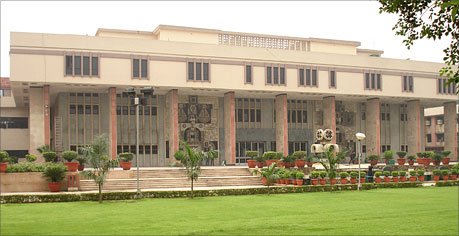The court emphasized the importance of conducting a scientific survey to ensure a fair and accurate resolution of the case, presenting the true facts before the court.
In Varanasi, a district court ordered the Archaeological Survey of India (ASI) director to conduct a scientific survey of the Gyanvapi mosque’s grounds, excluding the area previously sealed by the Supreme Court (a wuzukhana or ablution pond).
Following the conclusion of arguments on July 14, District Judge AK Vishwesha issued an order granting permission for the ASI to conduct the survey.
The court directed the ASI director to carry out a scientific investigation of the mosque’s premises while ensuring no damage is caused.
Earlier, in May of the same year, four Hindu women worshippers filed a petition with the district court, citing Section 75(e) and Order 26 Rule 10A of the Code of Criminal Procedure. They sought year-round access to the Gyanvapi mosque compound for worship and argued that a comprehensive scientific survey would support their claims and allow the court to make an informed decision based on expert findings.
The court, considering the ASI’s status as a premier institution with the necessary infrastructure and expertise, issued several specific directives for the survey:
(a) Conduct a scientific investigation/excavation/survey on the subject property, excluding the sealed areas.
(b) Use Ground Penetrating Radar (GPR) survey, excavation, dating methods, and other modern techniques to comprehensively investigate the extant structure and determine if it was built atop a Hindu temple.
(c) Submit a report of the scientific investigation to the court by August 4, 2023, including photographs and videos of the survey proceedings.
(d) Investigate the age and construction nature of the western wall of the disputed building using scientific methods.
(e) Conduct GPR survey directly beneath the three domes of the contested building and excavate if necessary.
(f) Conduct GPR survey beneath the western wall of the building and excavate if necessary.
(g) Conduct GPR survey beneath the ground of all cellars and excavate if necessary.
(h) Compile a list of all discovered artifacts in the structure, detailing their contents, and conduct a scientific investigation and dating exercise to determine their age and nature.
(i) Conduct a dating exercise on the building’s pillars and plinth to ascertain their age and construction type.
(j) Use GPR survey, excavation where necessary, dating exercise, and other scientific methods to determine the age and character of existing structures at the contested site.
(k) Examine artifacts and objects of historical and religious significance that may be found in various sections of the building and beneath the structure during the investigation.
Previously, Hindu devotees sought permission from the civil court to worship inside Gyanvapi Mosque, claiming it was once a Hindu temple and still contains Hindu deities. The civil court appointed an advocate commissioner to survey the mosque and videotape the premises, leading to the discovery of an object resembling a Shivling.
The case was later transferred to the Varanasi district court per Supreme Court orders. A request for a scientific investigation to determine the nature of the object was initially denied by the district court in October of the previous year, but the Allahabad High Court later ruled that a scientific investigation could be conducted without damaging the object. The Supreme Court then temporarily postponed the High Court’s directive pending responses from the Central and Uttar Pradesh governments.



